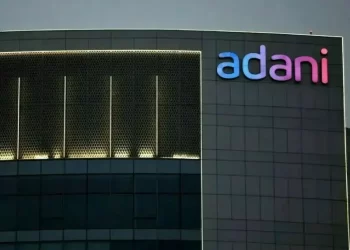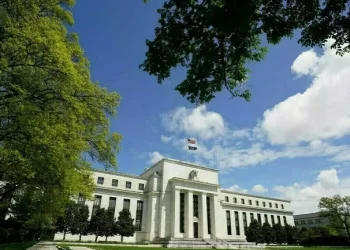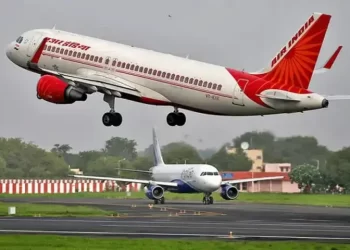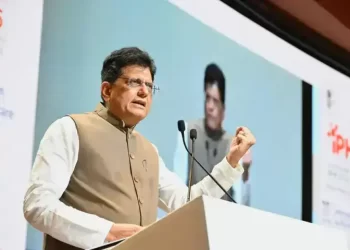TEL AVIV, Israel (news agencies) — The Middle East was bracing for a potential flare-up in violence on Sunday after Israeli authorities said a rocket from Lebanon struck a soccer field in the Israeli-controlled Golan Heights killing, 12 children and teens in what the military said was the deadliest attack on civilians since Oct. 7. The strike raised fears of a broader regional war between Israel and Hezbollah, which denied a role in the attack.
Overnight, the Israeli military said it struck a number of targets inside Lebanon, though the intensity of the strikes was similar to months of cross-border fighting between Israel and Hezbollah.
Saturday’s attack comes at a sensitive time, as Israel and Hamas are negotiating a cease-fire proposal to end the nearly 10-month war in Gaza and free the roughly 110 hostages who remain captive there.
Here is a look at the broader repercussions of Saturday’s attack:
On Saturday just before sunset, a rocket slammed into a soccer pitch where dozens of children and teens were playing in the Druze town of Majdal Shams, which is located about 12 kilometers (7 miles) south of Lebanon and next to the Syrian border. Twelve young people between the ages of 10 and 20 were killed, and 20 were wounded, according to the Israeli military.
“I feel darkness inside and out. Nothing like this happened here,” Anan Abu Saleh, a Majdal Shams resident, said from the soccer field on Saturday night. “There’s no way to explain this. I saw children, I don’t want to say what I saw, but its horrible, really horrible. We need more security.”
Shrapnel and spatters of blood pockmarked the field as emergency workers collected burned backpacks and bicycles. Overnight, residents began setting up hundreds of chairs on the field where the attack took place to hold a mass memorial. Residents told Israeli media it was the only place in the town that would be able to hold the tens of thousands of people expected to gather.
On Sunday morning, many of the bodies were brought to a community center in Majdal Shams, where family members wailed over the coffins. At midday, the coffins, draped in white cloth and bearing photos of the victims, were brought to the cemetery, passed through a crowd of thousands and lined up for burial. One 11-year-old child is still missing, residents told Israeli media.
The Druze are a religious sect that began as an offshoot of Shiite Islam. There are Druze communities in Israel, Syria, and Lebanon. There are about 140,000 Druze in Israel, 25,000 of whom live in four towns in the Israeli-controlled Golan Heights, according to Yusri Hazran of the Hebrew University, who is Druze and researches minorities in the Middle East.
The Druze community is considered among Israel’s most loyal citizens. Many Druze serve in the Israeli military, although those living in the Golan Heights have a more fraught relationship with the authorities.
Israel captured and annexed the Golan, a strategic plateau overlooking northern Israel, from Syria in the 1967 Mideast war. Much of the international community considers the area to be occupied territory.
While Druze leaders in the Golan still profess allegiance to Syria, relations with Israel are normally good. The Druze towns in the Golan are a popular vacation destination for Israelis and are filled with hotels and restaurants, and most Druze residents speak Hebrew fluently.
The attacks on the Israel-Lebanon border have simmered just below the threshold of an all-out war since the start of the conflict in October. But the deadly toll of the attack, and the young age of the victims, could push Israel to respond more severely.
The Iranian-backed Hezbollah began firing rockets at Israel the day after Hamas’ attack on Oct. 7, and Israel has responded by targeting what it says is Hezbollah military infrastructure with airstrikes and drones. Most of the attacks have been confined to the area on either side of the border, though Israel has also assassinated Hezbollah and Hamas leadership farther north in Lebanon. Tens of thousands of people on both sides of the border have evacuated the area.
Since early October, Israeli airstrikes in Lebanon have killed more than 500 people, mostly Hezbollah members, but also around 90 civilians. On the Israeli side, 22 soldiers and 24 civilians have been killed.
Israeli Prime Minister Benjamin Netanyahu, who was in America at the time of the strike, warned that Hezbollah “will pay a heavy price for this attack, one that it has not paid so far.”
The Israeli military’s Chief of Staff Lt. Gen. Herzi Halevi met with leaders of Majdal Shams on Saturday night, and said Israel was preparing for “the next stage of fighting” in the north. “We know how to strike even very far from the state of Israel,” he said.
In a rare move, Hezbollah denied it was responsible for the attack, but Halevi said the rocket was a Falaq rocket with a 53-kilogram warhead that belonged to the Hezbollah.
U.S. intelligence officials have no doubts that Hezbollah carried out the attack on the Golan Heights, but it was not clear if the militant group intended the target or misfired, according to a person familiar with the matter who was not authorized to comment publicly.
Lebanon’s government, in a statement that didn’t mention Majdal Shams, urged an “immediate cessation of hostilities on all fronts” and condemned all attacks on civilians.








